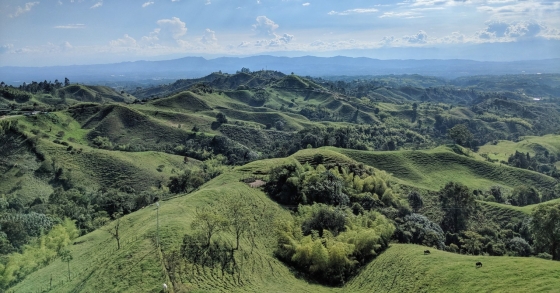GarzĂ³n Weather and Climate: A Comprehensive Guide
GarzĂ³n maintains a fairly consistent warm average temperature.
It also has a relatively rainy climate with high levels of precipitation.
Now, let’s break down all the climate details for a clearer picture.
Average maximum day and minimum night temperature
The climate in GarzĂ³n remains fairly constant, offering comfortable temperatures throughout the year. On average, daytime temperatures range from a comfortable 25°C in February to a comfortable 23°C in August.
Nighttime temperatures can drop, with average lows reaching 14°C in August. Check out our detailed temperature page for more information.Temperature ranges by month
Precipitation and rainy days
GarzĂ³n is known for its substantial rainfall, with annual precipitation reaching 3379 mm. The amount of precipitation varies moderately throughout the year. The wettest month, April, sees around 388 mm of rainfall, perfect for those who enjoy a bit of rain now and then. The driest month, August, still receives a respectable 194 mm of rainfall.The mean monthly precipitation over the year, including rain, hail and snow
Sunshine over the year
In GarzĂ³n, summer days are longer and more sunny, with daily sunshine hours peaking at 5.3 hours in January. As the darker season arrives, the brightness of the sun becomes less. April sees a soft sun for only 2.7 hours per average day. Visit our detailed sunshine hours page for more information.Monthly hours of sunshine
Daily hours of sunshine
Average humidity
The city experiences its highest humidity in May, reaching 89%. In January, the humidity drops to its lowest level at 82%. What does this mean? Read our detailed page on humidity levels for further details.
Relative humidity over the year
broken clouds and no rain partly cloudy and chance of rain partly cloudy and slight rainForecast for GarzĂ³n
Select a Month of Interest
Check the conditions for any month of the year.
The best time of year to visit GarzĂ³n in Colombia
The average rainfall figures in GarzĂ³n are quite high. Throughout the year, you have a chance of prolonged precipitation. So no matter what time of year you go, you will always have to deal with a high number of rainy days. This makes it more challenging to point out the best time of year to visit. If we needed to pick one month we would choose January which is the sunniest month of the year.Other facts from our historical weather data:
November has an average maximum temperature of 25°C and is the warmest month of the year.
The coldest month is August with an average maximum temperature of 23°C.
April tops the wettest month list with 388 mm of rainfall.
August is the driest month with 194 mm of precipitation.
January is the sunniest month with an average of 159 hours of sunshine.
No idea where to travel to this year? We have a tool that recommends destinations based on your ideal conditions. Find out where to go with our weather planner.




